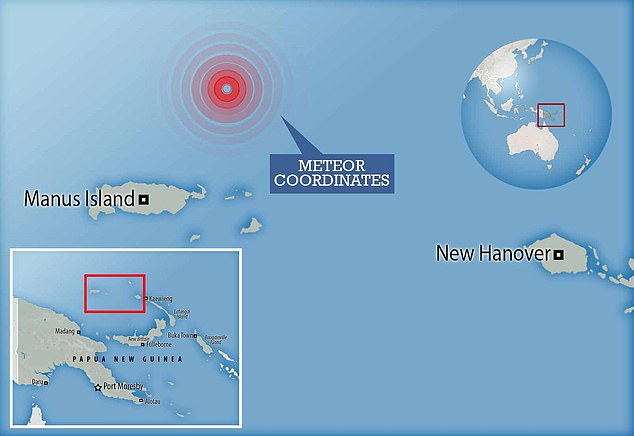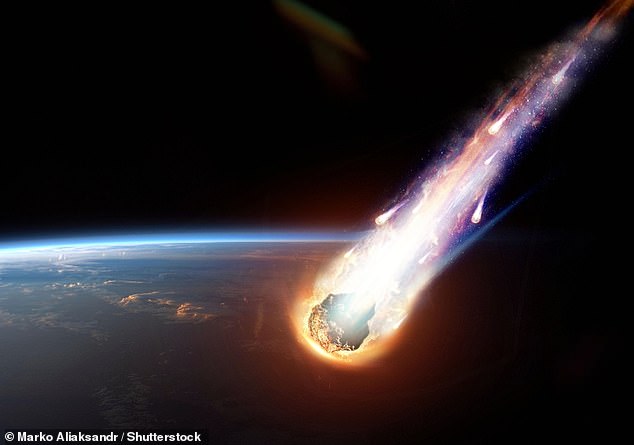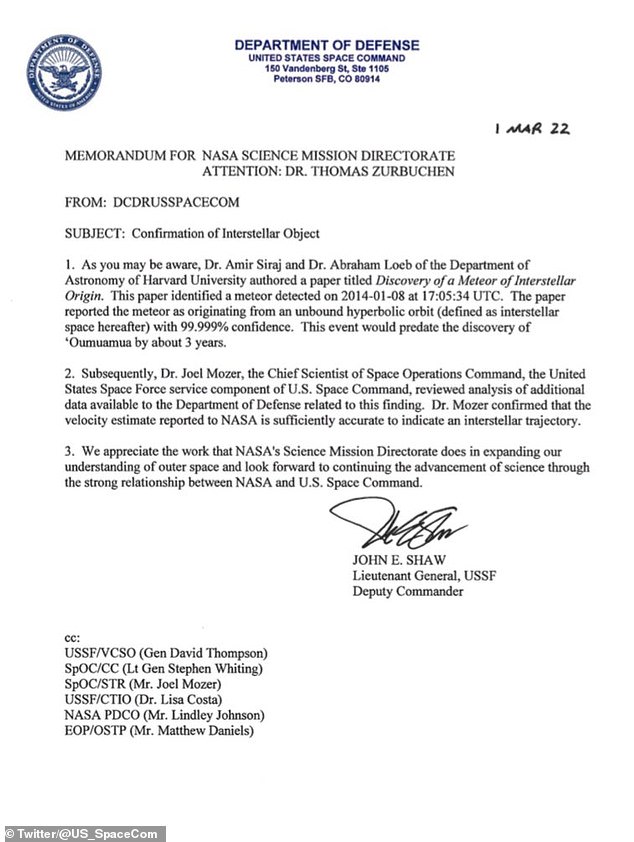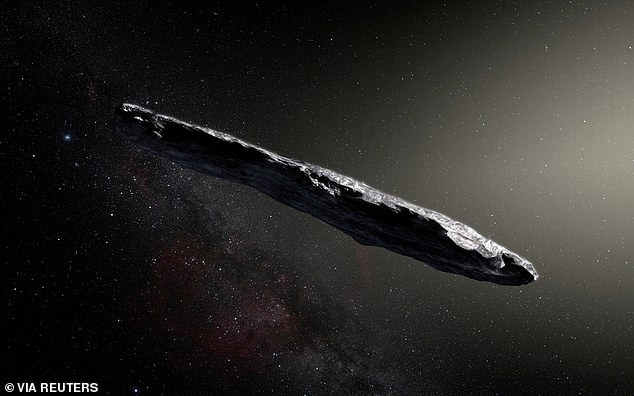Experts have confirmed that a meteorite that hit Earth in January 2014 came from another solar system, and is therefore the first known interstellar object.
In a newly released memo, US Space Command officials said the rocky object, which is only 1.5 feet (0.45 meters) wide, “was indeed an interstellar object.”
Their confirmation means that the famous stellar object known as Oumuamua, which was discovered in 2017, is actually the second interstellar object to visit our solar system.
According to NASA, a meteor lit up the sky near Manus Island, Papua New Guinea on January 8, 2014 while traveling at more than 100,000 miles per hour.
Scientists believe it may have left interstellar debris in the South Pacific Ocean, which if found could reveal more about the rocky object’s origin.
6/ “I had the pleasure of signing a memorandum with Tweet embedChief Scientist, Dr. Moser, to confirm that the previously discovered stellar object was indeed an interstellar object, an assertion that helped the broader astronomical community. ” pic.twitter.com/PGlIonCSrW
– US Space Command (@US_SpaceCom) April 7, 2022

According to NASA, a meteor lit up the sky near Manus Island, Papua New Guinea on January 8, 2014 while traveling at more than 100,000 miles per hour. According to scientists, it may have rained down the ocean with interstellar debris
Much of the information surrounding the object has been classified by the US government so far.
The memo, dated March 1 and posted to Twitter this month, confirms findings by US Space Command chief scientist Dr. Joel Moser.
The memorandum was signed by Lieutenant General John E Shaw, deputy commander of US Space Command.
Dr. Moser confirmed that the velocity estimate reported by NASA is accurate enough to indicate an interstellar path.
Harvard researchers are back in 2019 Publish a study On the arXiv prepress server, acknowledging the existence of the meteorite and saying that it came from outside our solar system.
The study, which has not yet been peer-reviewed, reported that the meteorite originated from interstellar space with “99.999 percent confidence”.
According to the authors, the study had been waiting for peer review for years until the claim could be confirmed, but it ran into obstacles from the US government, which was withholding essential information from NASA’s publicly available database.
Amir Siraj, one of the study’s authors, said: vice He wants to track down parts of the body that may be on the ocean floor.
“I started thinking about the fact that we have interstellar matter delivered to Earth, and we know where it is,” he said.
“The only thing I’m going to check – and I’m actually talking to people – is if it’s possible to search the ocean floor off the coast of Papua New Guinea and see if we can get any fragments.”

According to NASA, a meteor rose through the sky near Papua New Guinea at more than 100,000 miles per hour and impacted near Manus Island on January 8, 2014 (concept image)

The memo, dated March 1 and posted on Twitter this month, confirms findings by US Space Command chief scientist Dr. Joel Moser.
It’s going to be a big task, but we’re going to look at it very, very deeply because the possibility of getting the first piece of interstellar matter is exciting enough to check it out thoroughly and talk to all the world’s ocean voyages experts on meteorite recovery.
Information about the meteorite is scarce, although its details – including its coordinates over Manus Island – are recorded at NASA’s Center for Near-Earth Object Studies (CNEOS). fireworks database.
Siraj said he was inspired to investigate the meteorite and its impact after noticing its typically higher speed – more than 100,000 miles per hour – compared to other entries in the database.
It was really fast, and so I was like, ‘Oh my God, this could be an interstellar meteor,’ Siraj told Vice. He was hiding in plain sight.
It wasn’t that we had to dig to find this database – it was more that there was no interstellar object until 2017.
As a result, no one had reason to believe that extrasolar meteorites could exist.
Siraj points out in his 2019 paper that their high velocity points to ‘a possible origin from the deep interior of a planetary system or star in the thick disk of the Milky Way’.

This artist’s impression shows that Oumuamua, which was discovered in 2017. Until now, it was known as the first interstellar object to visit our solar system
High speed is an indication of an object originating from outside our solar system because if it were in orbit around our sun it would be much slower.
For comparison, the Earth revolves around the Sun at about 66,000 miles per hour.
Siraj hopes that his study, which was presented in Astrophysical Journal Letters, will be reviewed and published.
Next, we hope it will help the astronomical community and allow research into the implications of the 2014 meteor impact.
This discovery of course means that Oumuamua landed to be the second interstellar object to be discovered, in October 2017.
Oumuamua was originally classified as a comet, and was later reclassified as an asteroid because it lacks a coma – the cloud of gases that surrounds a comet’s nucleus.
Crimean amateur astronomer Gennady Borisov, the third interstellar object known to be discovered, discovered a comet called 2I/Borisov using a telescope in August 2019 as the sun passed.
2I/Borisov is one of the most “pure comets” ever observed, scientists announced last year, meaning it hasn’t been altered or degraded by heat and radiation from stars like our sun.

“Beer aficionado. Gamer. Alcohol fanatic. Evil food trailblazer. Avid bacon maven.”
